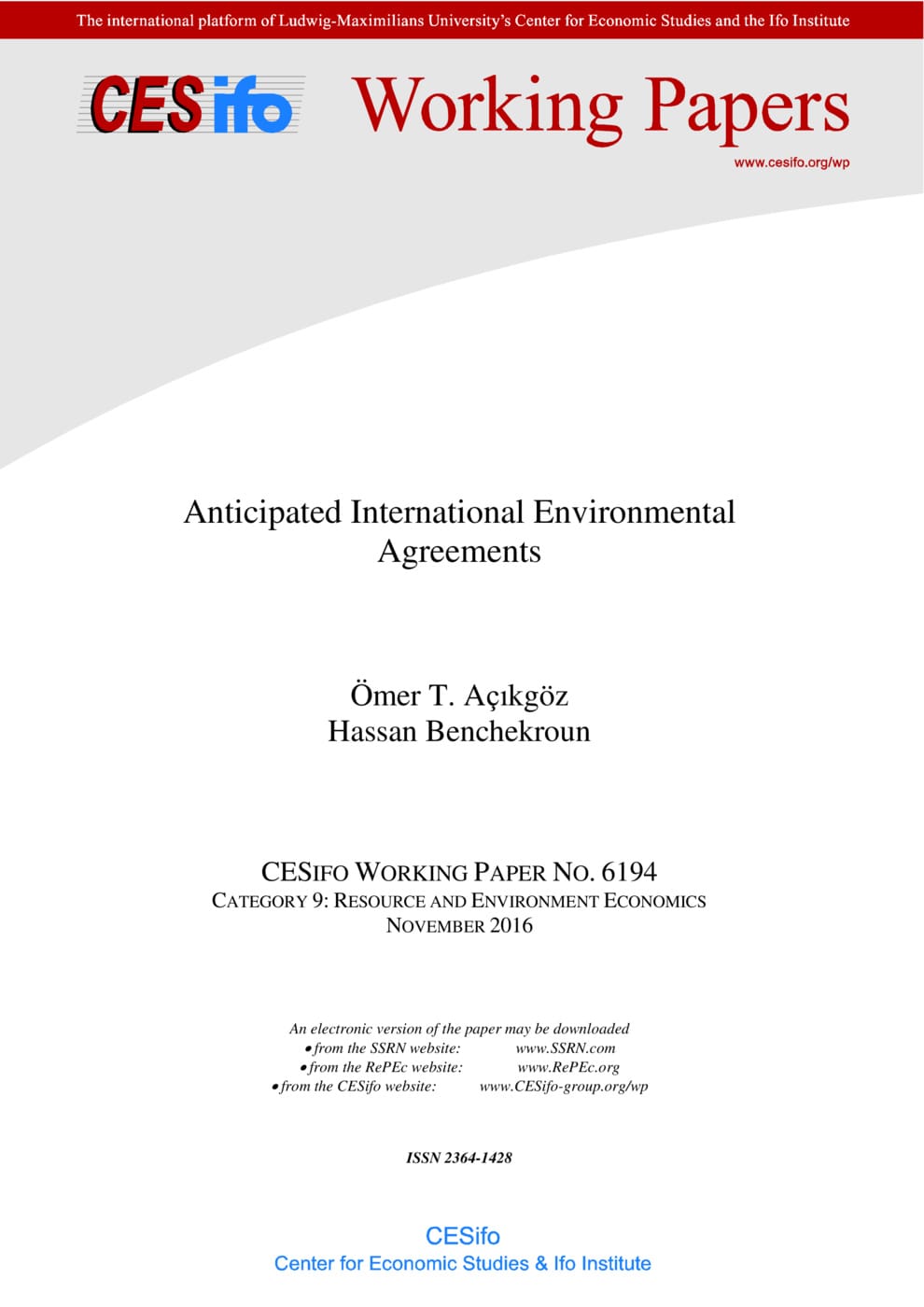Anticipated International Environmental Agreements
CESifo, Munich, 2016
CESifo Working Paper No. 6194

Consider a situation in which countries anticipate an international environmental agreement (IEA) to be in effect sometime in the future. What is the impact of the future IEA on current emissions after its announcement? We show that the answer to this question is ambiguous. We examine four types of IEAs that aim to reduce pollution stock in the environment. IEA type 1 sets a level of emissions, IEA type 2 and IEA type 3 set a percentage and a uniform cut vis-à-vis the business-as-usual policy respectively. IEA type 4 sets the policy that maximizes future joint benefits of the signatories. We show that all of these agreements reach their goal in the long run, but the intended benefits of these IEAs can potentially be offset by the anticipatory non-cooperative response of the signatories, leading to an environmental degradation in the short run. Which IEA is preferable depends on the targeted level emissions during the phase of cooperation. When this target is above a certain threshold, welfare under IEA type 1 is larger than under IEA type 2 which is larger than under IEA type 3. Moreover, the highest level of welfare that can be attained under IEA type 1 is above the highest level of welfare achieved by any one of the other three IEAs.
Resources and Environment
Energy and Climate Economics